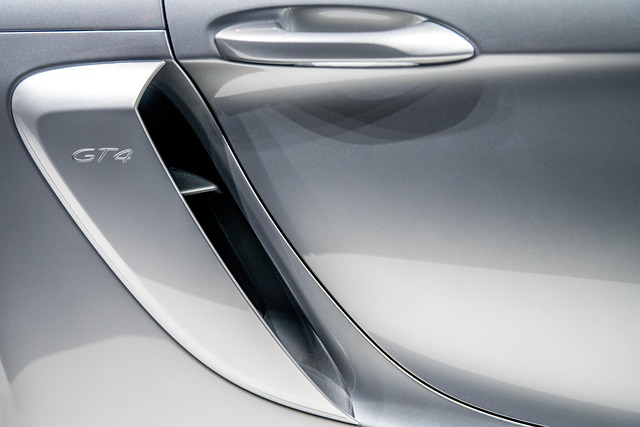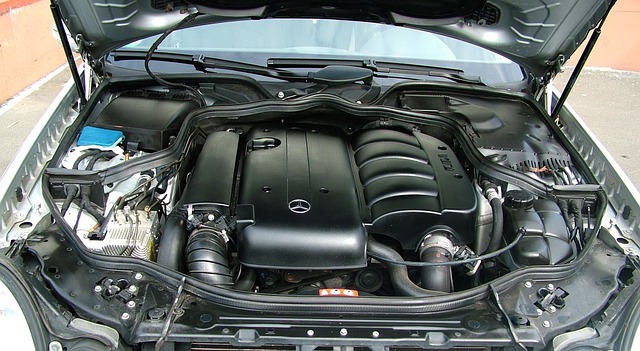Optimizing airflow dynamics through Select Cold Air Intakes (CAIs) enhances engine performance. CAIs direct cold, dense air into engines, bypassing hot exhaust gases that hinder performance, resulting in improved intake efficiency and robust combustion. Modifying cold air boxes further enhances airflow for maximum benefits. High-quality CAIs with dynamic admission systems and lightweight feeders ensure efficient combustion, boosting power output and torque delivery, crucial for high-performance vehicles. Test and optimize your airflow system for peak engine performance and ultimate speed.
In the pursuit of ultimate speed, efficient airflow is paramount. Understanding the dynamics of airflow can significantly enhance vehicle performance, making every journey a thrill. This article delves into crucial aspects like airflow dynamics, intake design, and the pivotal role of Select Cold Air Intakes in boosting efficiency. We explore benefits, types, optimization strategies, testing, real-world applications, and more, offering a comprehensive guide to achieving maximum speed and performance.
- Understanding Airflow Dynamics for Speed
- The Role of Intake Design in Performance
- Select Cold Air Intakes: Benefits and Types
- Optimizing Intake Systems for Maximum Efficiency
- Testing and Fine-Tuning for Ultimate Speed
- Real-World Applications: Success Stories
Understanding Airflow Dynamics for Speed

Understanding Airflow Dynamics for Speed
In the quest for ultimate speed, efficient airflow plays a pivotal role in an engine’s performance. By optimizing the flow of air into the engine, you can significantly enhance its power and acceleration. The key lies in understanding how air behaves when it interacts with various components within the engine bay. Cold air intakes (CAIs) are one of the most effective ways to achieve this. CAIs select cold, dense air from outside the engine compartment, bypassing hot exhaust gases that can compromise airflow efficiency. This ensures efficient engine breathing, allowing for a more robust combustion process and improved speed.
Modifying the cold air box is another strategy that contributes to efficient airflow. These modifications can include optimizing the shape and size of the air intake to reduce restrictions, ensuring the air flows smoothly and efficiently into the engine. Regular cold air intake maintenance is also crucial to maintain optimal performance. Keeping the intake system clean and free from debris ensures uninterrupted airflow, maximizing the benefits of your CAI setup.
The Role of Intake Design in Performance

The design of a cold air intake (CAI) plays a pivotal role in enhancing vehicle performance tuning. Unlike stock intakes that often restrict airflow, a well-engineered CAI optimizes air induction for modified cars by drawing in cooler, denser air directly from the environment. This is particularly crucial for top-secret car intake upgrades as it allows engines to breathe more efficiently, resulting in increased power output and improved torque delivery.
By selecting a high-quality cold air intake, enthusiasts can experience a significant boost in performance across the rev range. The strategic placement of the intake in the engine bay ensures that cool air is delivered directly to the turbine, enhancing the combustion process and boosting overall vehicle performance. This simple yet effective modification is a favorite among car enthusiasts looking to unlock their vehicles’ true potential without compromising on reliability or aesthetics.
Select Cold Air Intakes: Benefits and Types

When optimizing your vehicle for ultimate speed, Select Cold Air Intakes (SCAI) play a pivotal role in enhancing engine performance. These intakes are designed to direct cold, dense air directly into the engine, maximizing power output and fuel efficiency. The primary benefit lies in their ability to improve airflow, allowing for more efficient combustion and better torque delivery. This is particularly crucial for high-performance vehicles where every component contributes to overall speed.
SCAI come in various types, each catering to different vehicle needs. Dynamic air admission systems, for instance, use adjustable valves and filters to optimize airflow based on engine load, ensuring optimal performance across all RPMs. Lightweight cold air feeders are another popular choice, offering reduced restrictions and improved flow without compromising durability. Additionally, the air filter for cold air intake acts as a crucial component, trapping contaminants while allowing cool air to pass through unimpeded, further enhancing engine breathing and overall vehicle speed.
Optimizing Intake Systems for Maximum Efficiency

To achieve ultimate speed, efficient airflow is paramount, and a key area to focus on is the intake system. Optimizing cold air intakes (select cold air intakes) can dramatically improve engine performance by ensuring a constant supply of cool, dense air. Traditional air filters are often restrictive, limiting airflow and reducing power output. High-performance intakes, like lightweight cold air feeders, incorporate advanced designs to minimize restrictions and maximize air flow rates.
These dynamic air admission systems not only draw in more air but also deliver it precisely where needed, enhancing combustion and unlocking the full potential of your engine. By selecting a well-designed cold air intake, you can achieve better throttle response, increased horsepower, and improved torque, ultimately contributing to faster times on the track or road.
Testing and Fine-Tuning for Ultimate Speed

To achieve ultimate speed, testing and fine-tuning your vehicle’s airflow system is crucial. One key component to consider is selecting a cold air intake (CAI). By directing cool, dense air directly into the engine, a CAI can significantly improve performance. Start by choosing a high-quality, efficient air filter for your cold air intake to ensure maximum airflow without restricting it. This simple modification can lead to notable gains in power and efficiency.
For off-road vehicles or those seeking even more power, exploring custom cold air box modifications can be a game-changer. These advanced setups route air from the outside environment through a series of components designed to enhance cooling and density before delivering it to the engine. Such modifications often require expertise and specialized tools, but they offer substantial benefits in terms of increased horsepower and torque, especially under demanding conditions.
Real-World Applications: Success Stories

In real-world applications, efficient airflow plays a pivotal role in enhancing performance across various sectors. Motorsport teams have long recognized the power of optimized air intake systems, such as Select Cold Air Intakes (SCAI), to boost engine power and efficiency. These advanced systems strategically direct cold, dense air directly into the engine, resulting in increased horsepower and torque.
Beyond motorsport, dynamic air admission systems and cold air box modifications have found their way into everyday vehicles, thanks to enthusiasts and customizers. By utilizing these techniques, owners can enjoy improved fuel economy, smoother power delivery, and enhanced overall performance—a testament to the universal benefits of efficient airflow solutions in various automotive applications.
Efficient airflow is key to unlocking an engine’s full potential. By understanding the intricate dynamics of airflow, optimizing intake systems, and strategically selecting components like cold air intakes, car enthusiasts can achieve remarkable speed gains. The real-world success stories highlighted in this article underscore the transformative power of carefully tailored airflow solutions. When it comes to enhancing performance, choosing the right cold air intake is a game-changer that can propel your vehicle to new heights.



